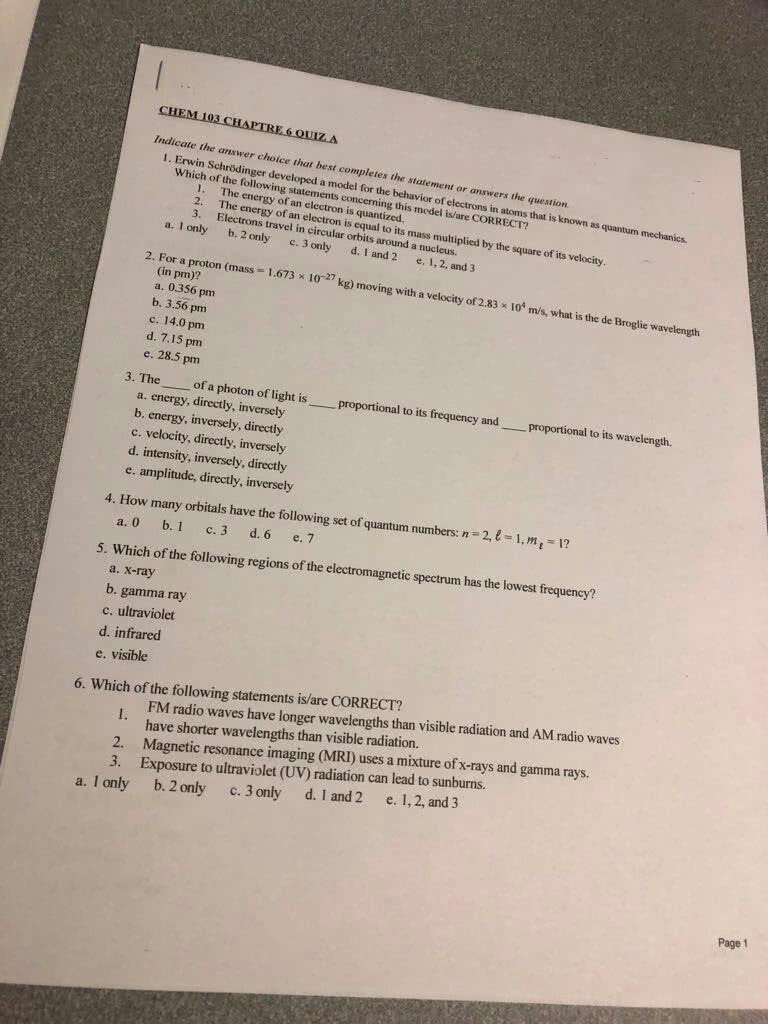CH 301 Chapter Notes - Chapter LE09: Ultraviolet, Radiography, Visible Spectrum
Document Summary
Electromagnetic radiation: a traveling wave characterized by an oscillating electric and magnetic fields. Wavelength: distance between two peaks of the wave. Frequency: number of peaks that pass by a given point in space per second. Speed of light: universal constant because it is the same for all types of light. Long wavelengths to short wavelengths: gamma rays. More than enough energy to completely ionize matter, radiation is absorbed and electrons are ejected: x-rays. More than enough energy to completely ionize matter, radiation is absorbed and electrons are ejected: ultraviolet radiation. Onset of full ionization of the molecule, enough energy to promote certain electrons all the way out of the molecule: visible light. Electronic excitations, excited to higher energy states= key factor in perception of color. Vibrate molecules, bonds within the molecule are pushed and pulled such that the bonds stretch and bend: microwaves. Rotational excitation, molecules rotate rapidly enough to cause heat generation through the friction between molecules: radio waves.


